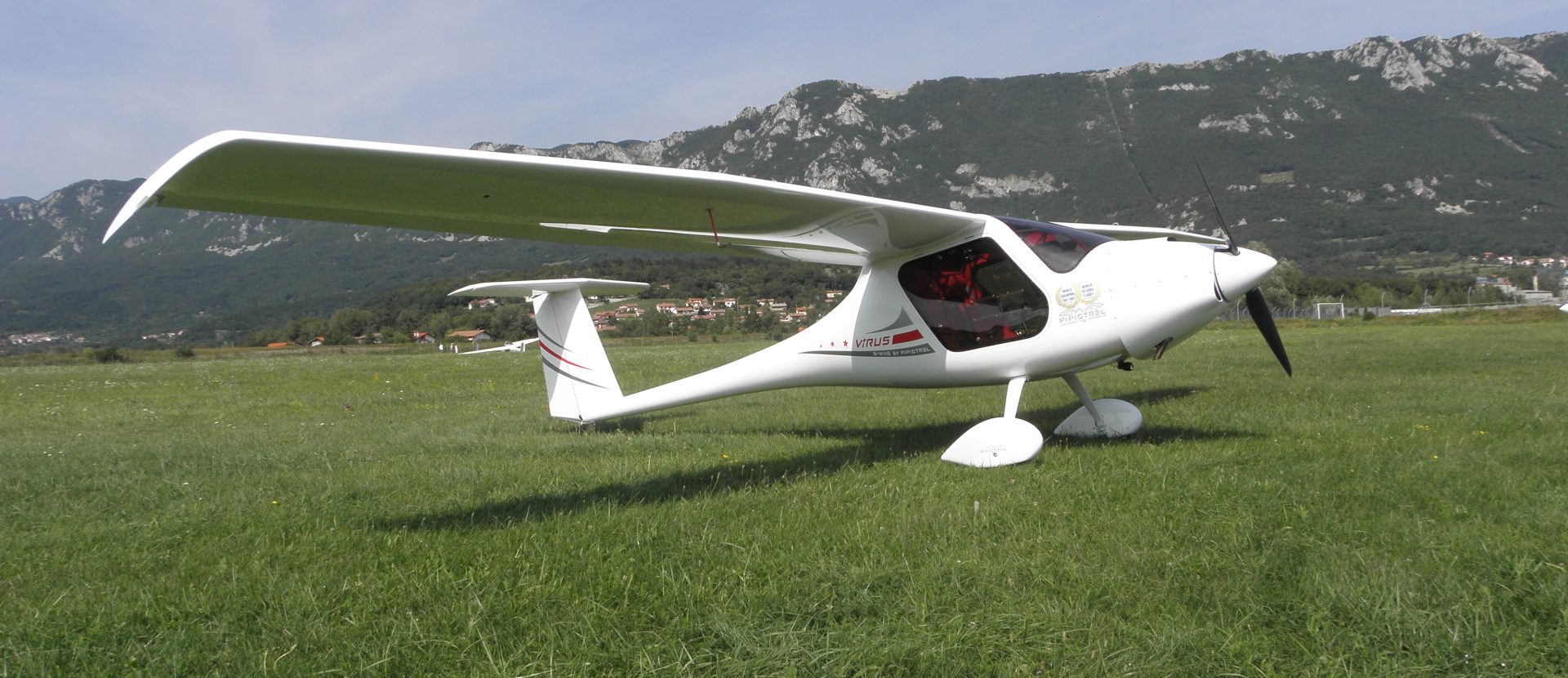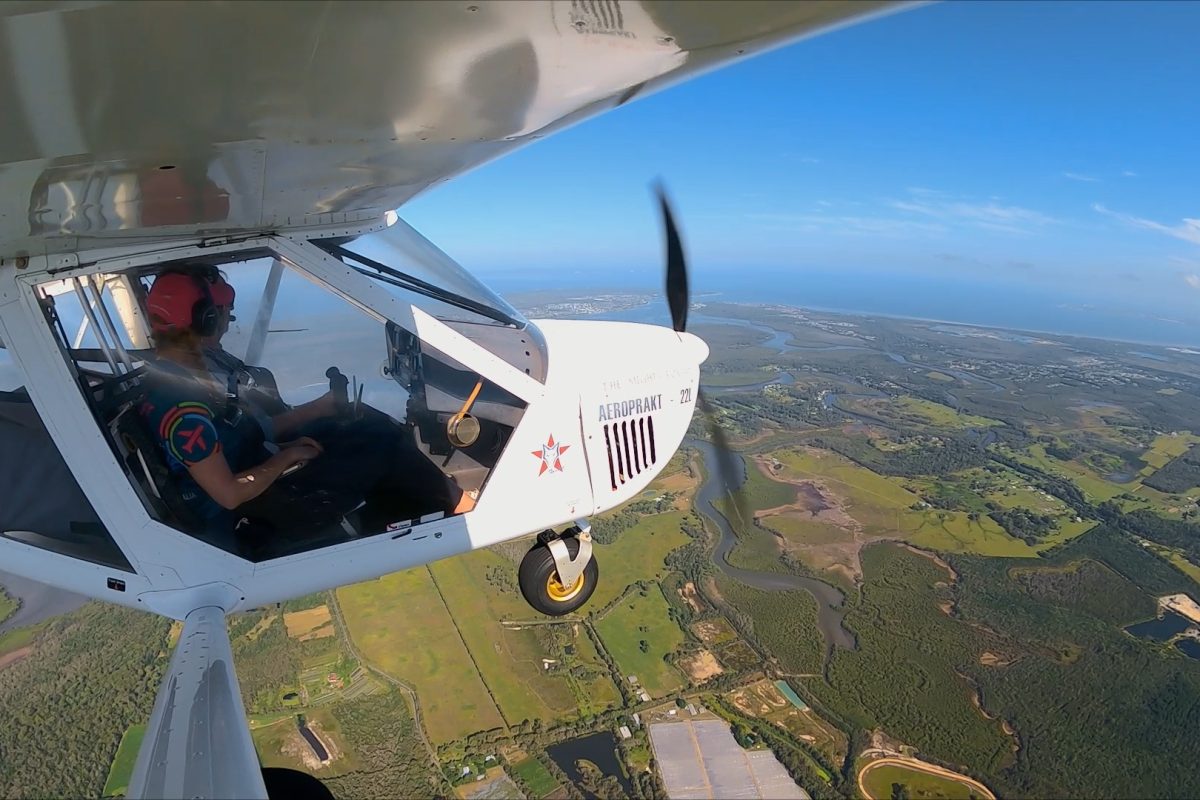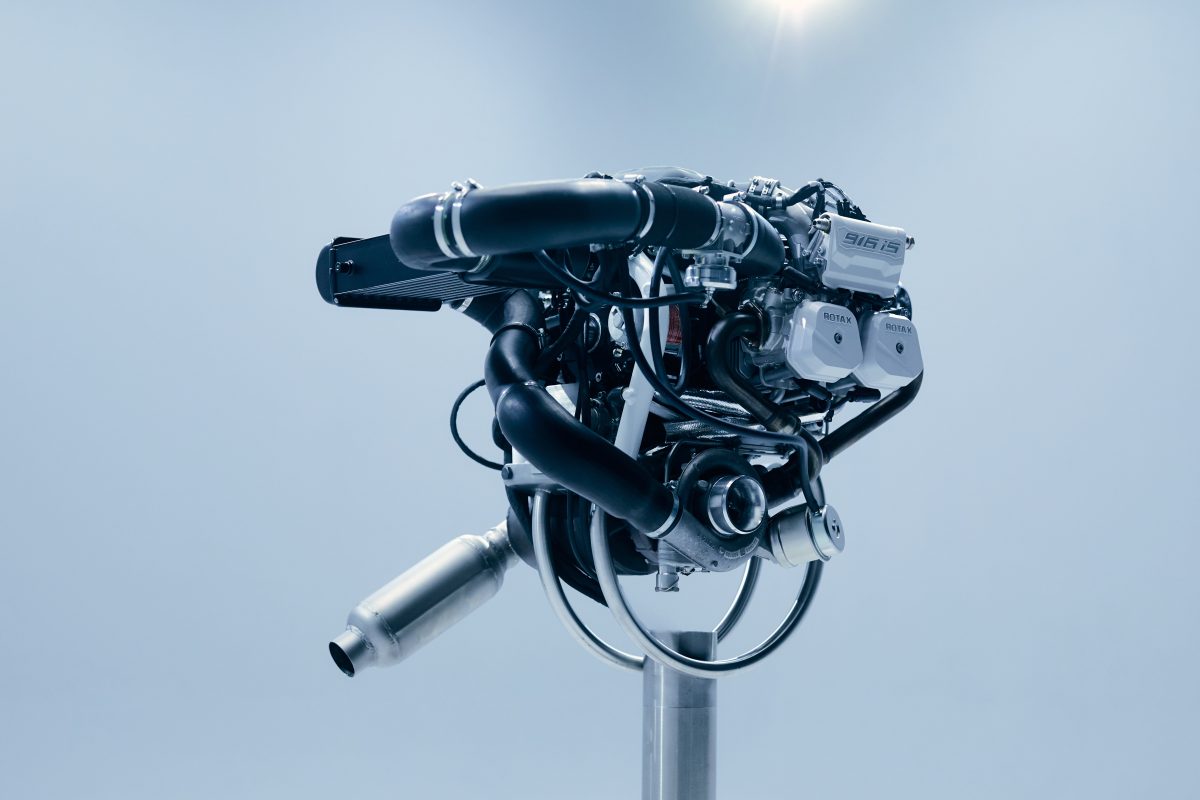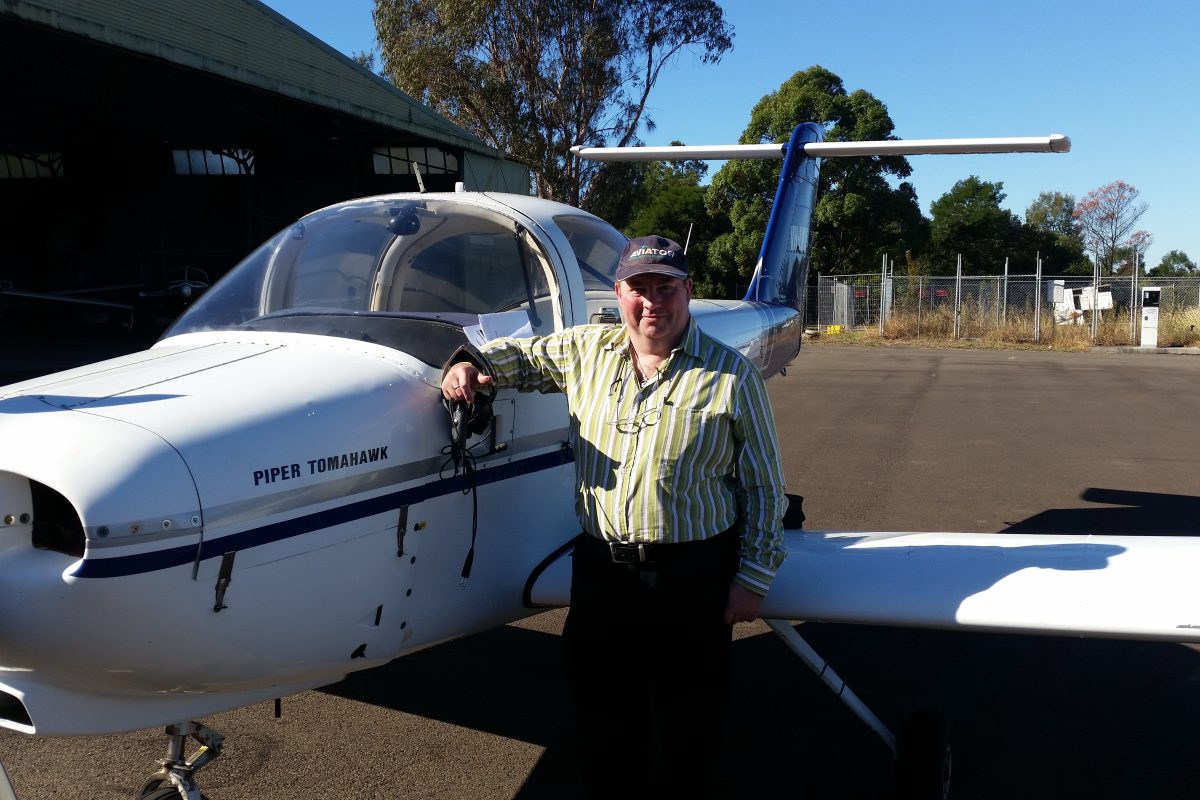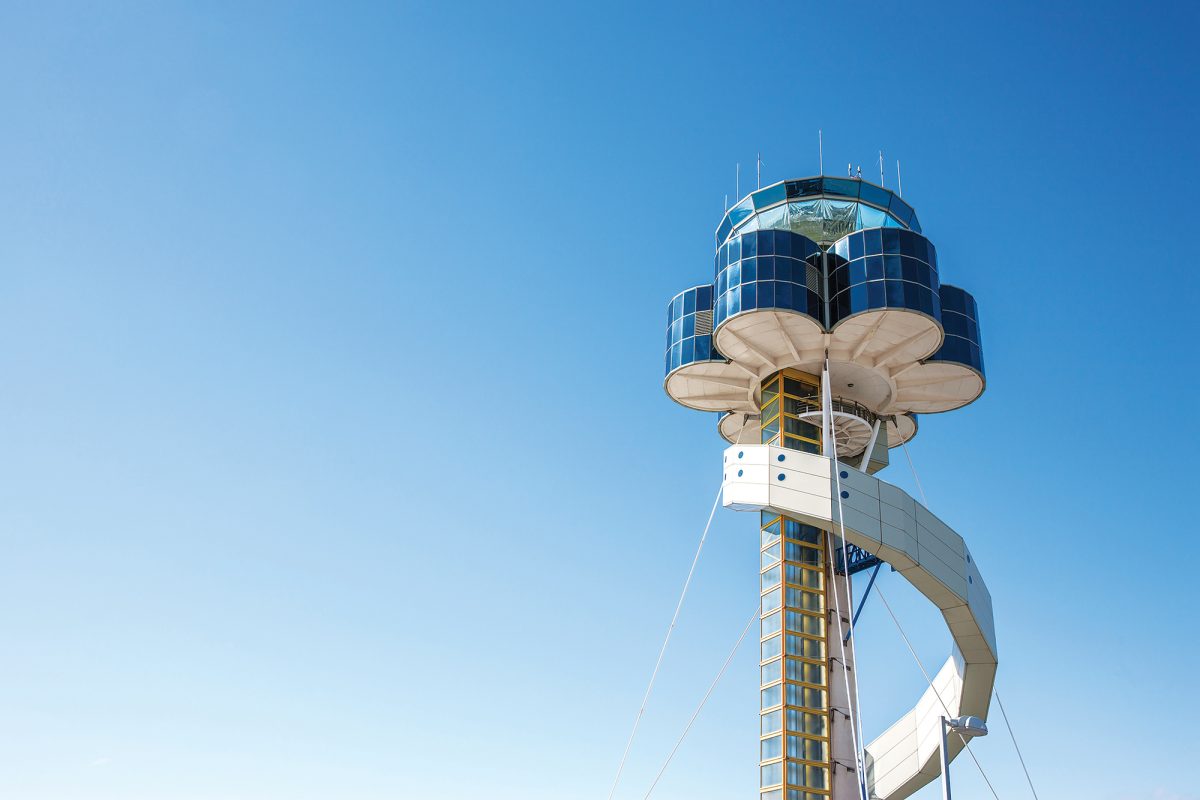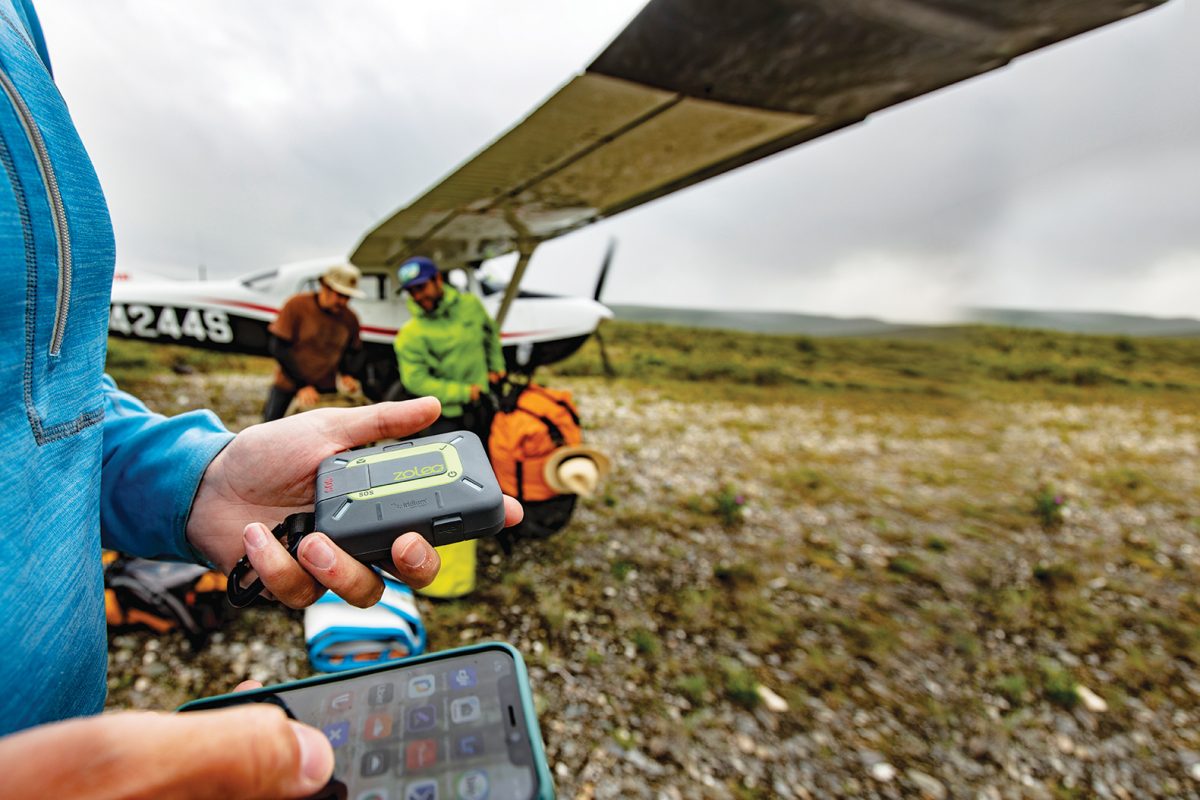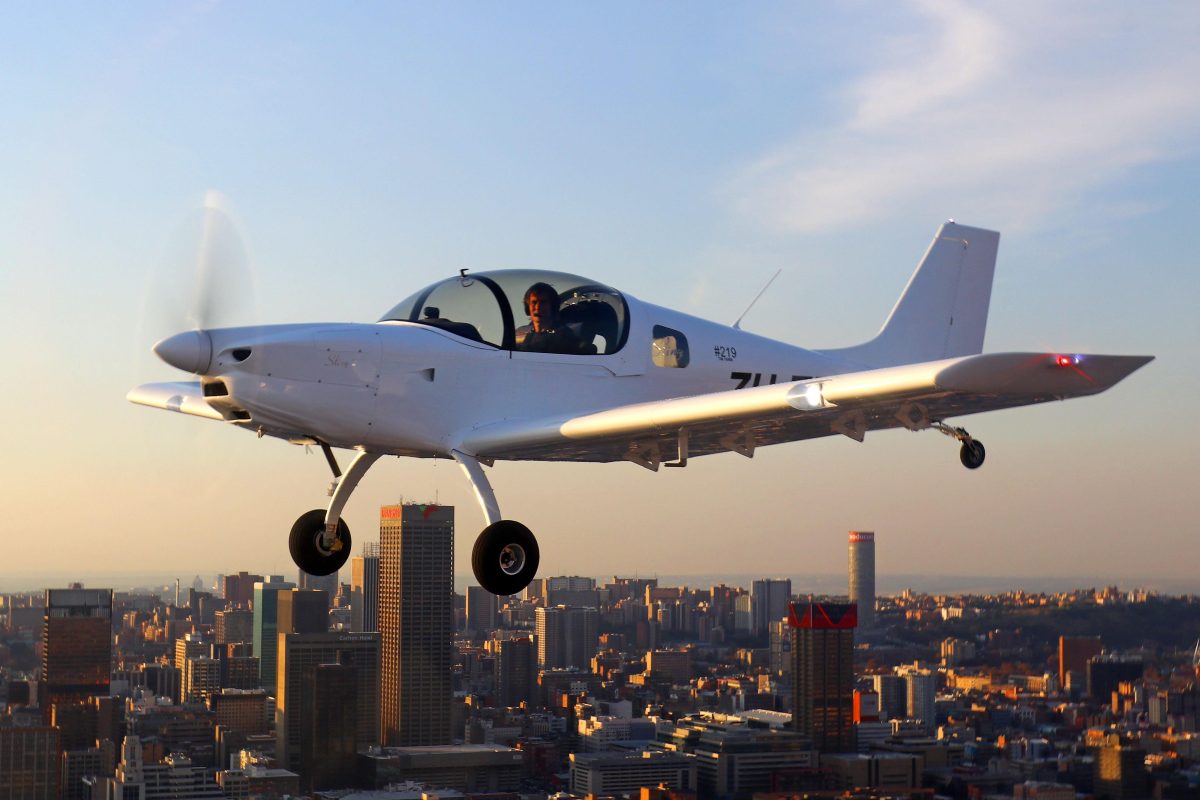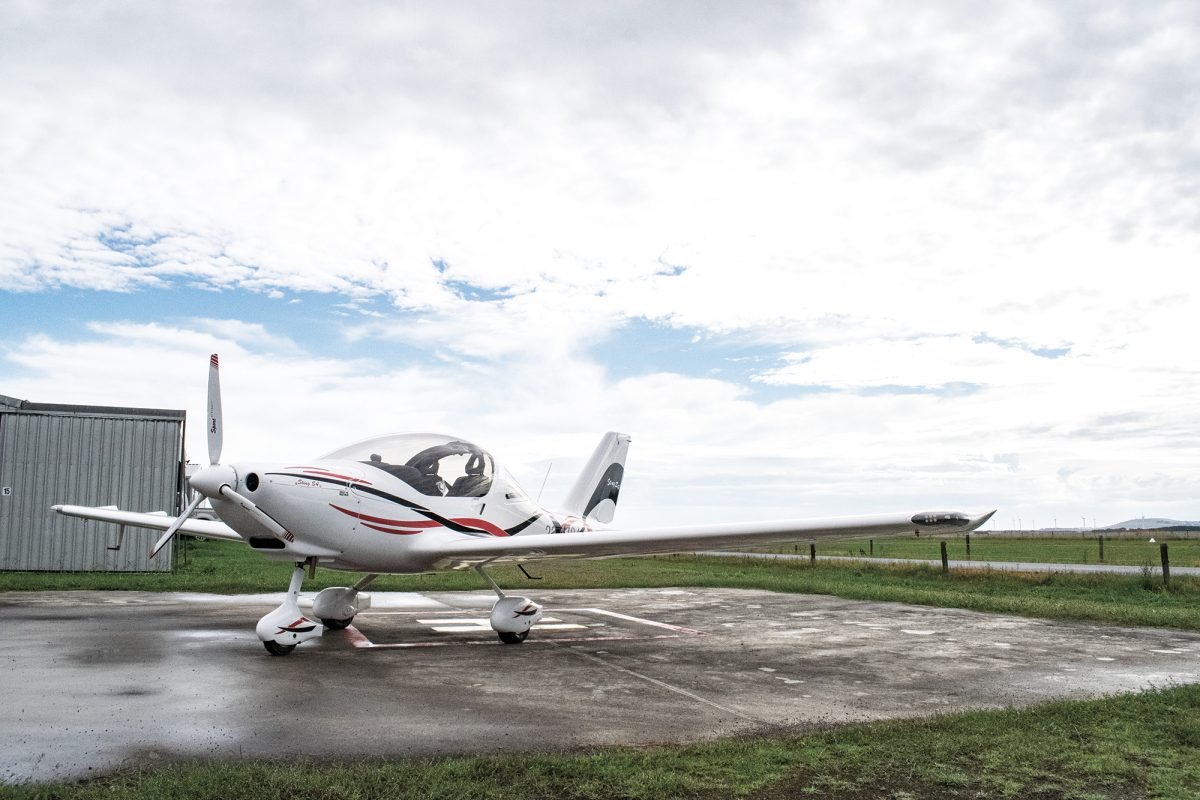THE FASTEST HIGH-WING CRUISER?
Many aircraft designers talk about the compromises and challenges of achieving speed and efficiency. For Slovenian builders Pipistrel, they’re succeeding in both. The Pipistrel Virus (pronounced ‘why-russ’) is billed by its makers as “the most advanced in its category”. It’s a bold call, but spend some time with this aircraft and you’ll wonder if you really are looking at the future of light aviation.
A high-wing cantilever design made from first-class composite materials, the Virus SW 100 is super light and super comfortable. It’s aided by a pod-and-boom configuration, weighing in at just 289kg, empty. With an MTOW of 600kg, this gives you 311kg of useful load, more than enough for 2 passengers, fuel and an overnight bag for travel.
From its inception, the Virus was designed with the idea of efficiency in mind. Pipistrel are also known as master builders of gliders, and this design philosophy has bled into their powered aircraft production, too. “I am convinced that aircraft must fly without the power of the engine.” says Ivo Boscarol, founder of Pipistrel, “Power must be only for take-off and climb, then use the least possible energy in cruise.” The design quickly makes sense, under this mindset, and you’ll notice the glide ration of 15-to-1.
While obviously not a full-fledged glider, the philosophy has led to the Virus SW 100 posting up some useful performance metrics. A fuel consumption of 17.8 litres per hour, an endurance of 5.3 hours (plus 30 minutes reserve) and a huge 783 nm (1,450 km) range are all thanks to Pipistrel’s continued focus on maximising efficiency. For a pilot looking to travel, or just fly efficiently, it’s an eye-catching summary.
While efficiency is clearly Pipistrel’s strong point, the Virus SW 100 is certainly not lacking in speed. Equipped with the always-reliable Rotax 912 ULS, the Virus SW 100 boasts a staggering cruise speed of 147 kn (273 km/h). The company states the Virus SW 100 is “the fastest high-wing cruiser” in the market and with those kinds of stats, I’m not seeing much competition. The VNE is 163 knots, too, so you can use every bit of your high cruise speed even with some lumps and bumps. Looking at this small, compact high-wing, it’s hard to imagine it outrunning a Sling 2 by more than 20 knots, but that’s exactly what you’re getting with this machine.
The Kevlar-reinforced cockpit is somewhat slim at 43.3 inches, but it’s surprisingly comfortable in its highly-utilitarian design with leather seats, carbon fibre dash, dual pilot controls and a modern glass dash. It’ll feature GPS auto-pilot if you want it, alongside an electric or hydraulic-powered constant speed propeller. An interesting feature of the Virus is its flap controls, able to be put in a -5° position when cruising to increase aerodynamic flow and aid fuel efficiency – it’s a sign of thinking outside the square.
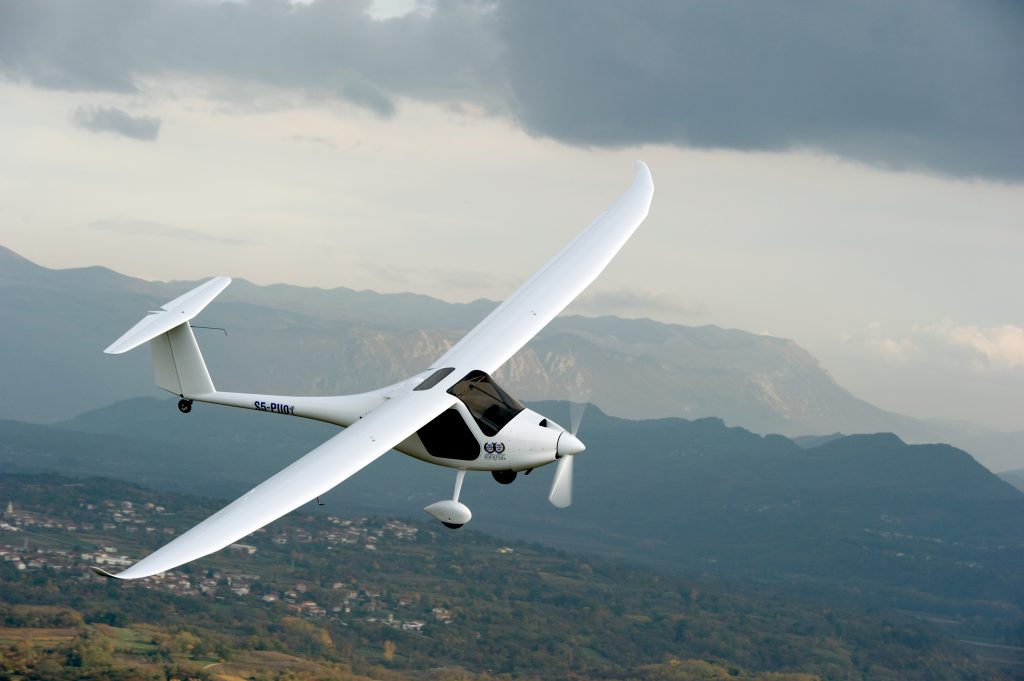
One noticeable downside to the Virus’ focus on efficiency is the lack of access in-cockpit to the baggage compartment. While it’s not a major factor, I often find myself reaching behind the seats even for a water bottle or a snack. Not being able to rely on behind-the-seat storage is a little frustrating at first, but certainly not something that can’t be adapted to.
In flight, the Virus performs extremely well. It’s high power-to-weight ratio and exceptional, low-drag design allows the Virus to climb at over 1,000 ft/min, allowing you to get up to a suitable cruising altitude in no time at all. At the controls, you’ll notice the Virus feels quite responsive, however its full-span flaperons give it a bit of a heavier roll than other aircraft in the category.
Coming into land the Virus is noticeably fast, a downside to its sleek, aerodynamic design. The plane takes a lot of effort to slow down, with full flaps and spoilers required. Once on the ground however, the Virus doesn’t take too much runway to come to a stop. Approach needs to be quite flat, so be aware, but for its performance in the air it’s a reasonable price to pay.
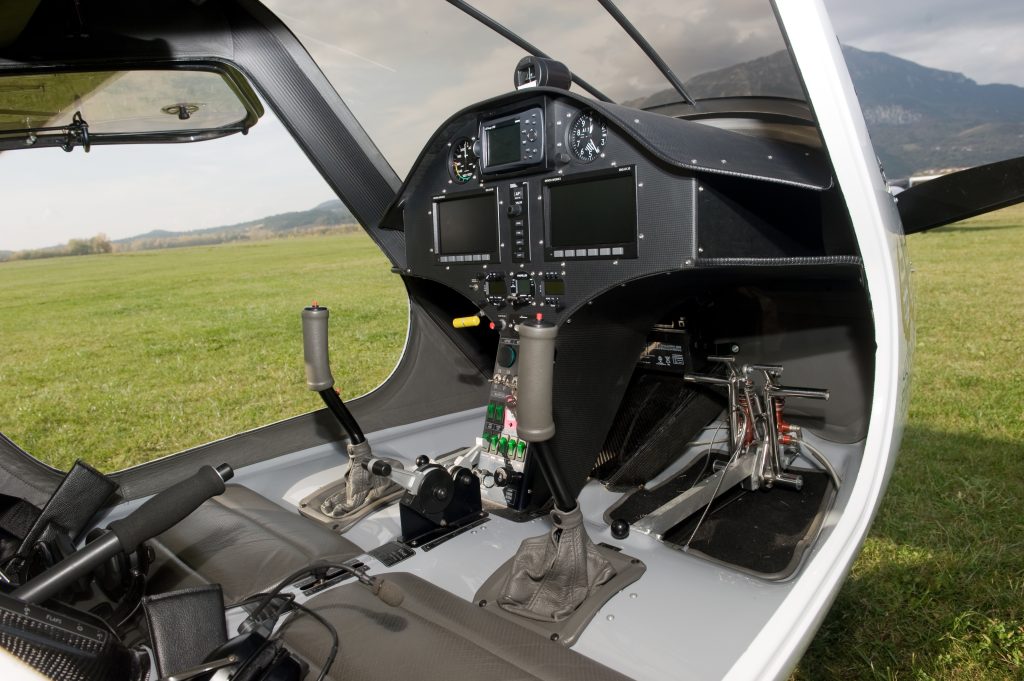
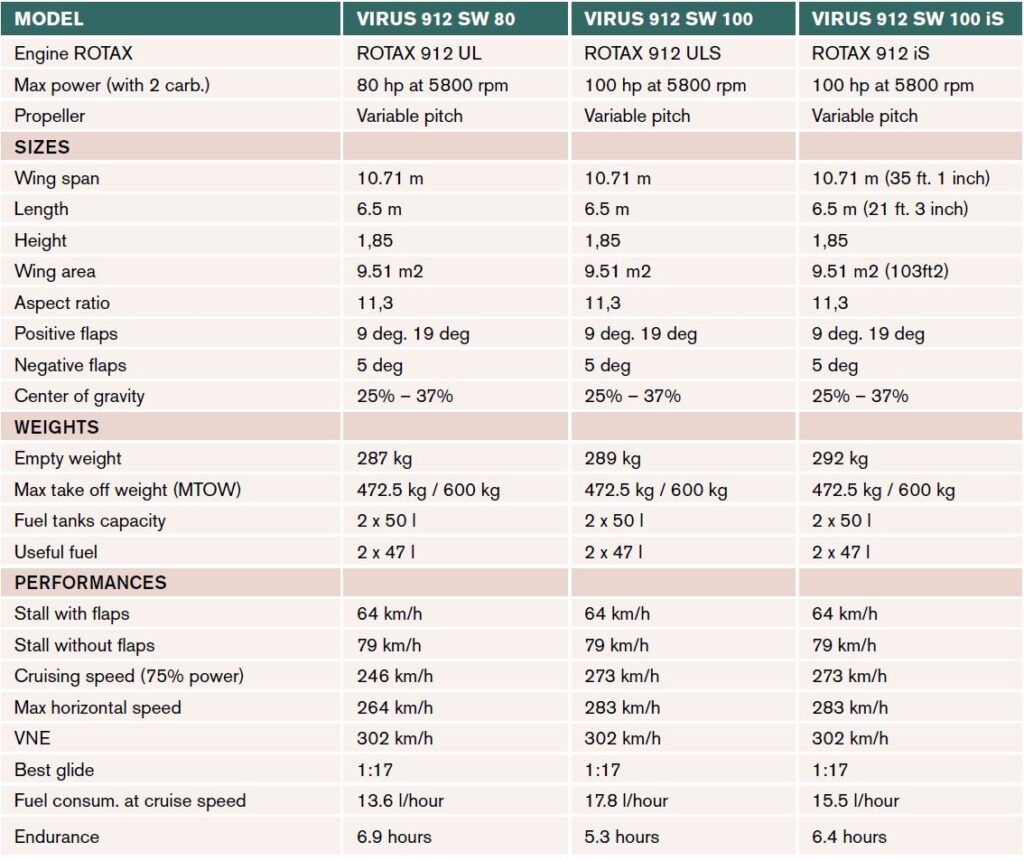
Perhaps my favourite aspect of the Pipistrel Virus SW 100 is its stunning level of visibility out of the doors and over the short nose. Having flown primarily low-wings, “getting to jump into a high-wing plane is an absolute treat for observing the scenery, and there’s none better than the Virus with its all-glass doors”, giving you unobstructed views of the world passing by below. There’s plenty of aircraft out there that are well-suited to travel in terms on paper, offering decent speed and range. However, by allowing you to take in the views and experience your journey in this level of detail, wherever you’re headed, the Virus becomes a clear favourite.
While it would serve extremely well as a trainer, I believe the Virus really lends itself to private ownership. Whether you’re heading out for a scenic flight with those large windows or packing your bags for a longer trip, the Pipistrel Virus SW 100 will serve your purposes well.
Pipistrel is currently without a representative in Australia, however the company has stated their intention to set up a new distribution network throughout the country, and are seeking interested parties at the present moment. The SportPilot team is excited to see more of these fantastic machines making their way to Aussie shores, so be sure to check our news section for updates on Pipistrel’s movements.
